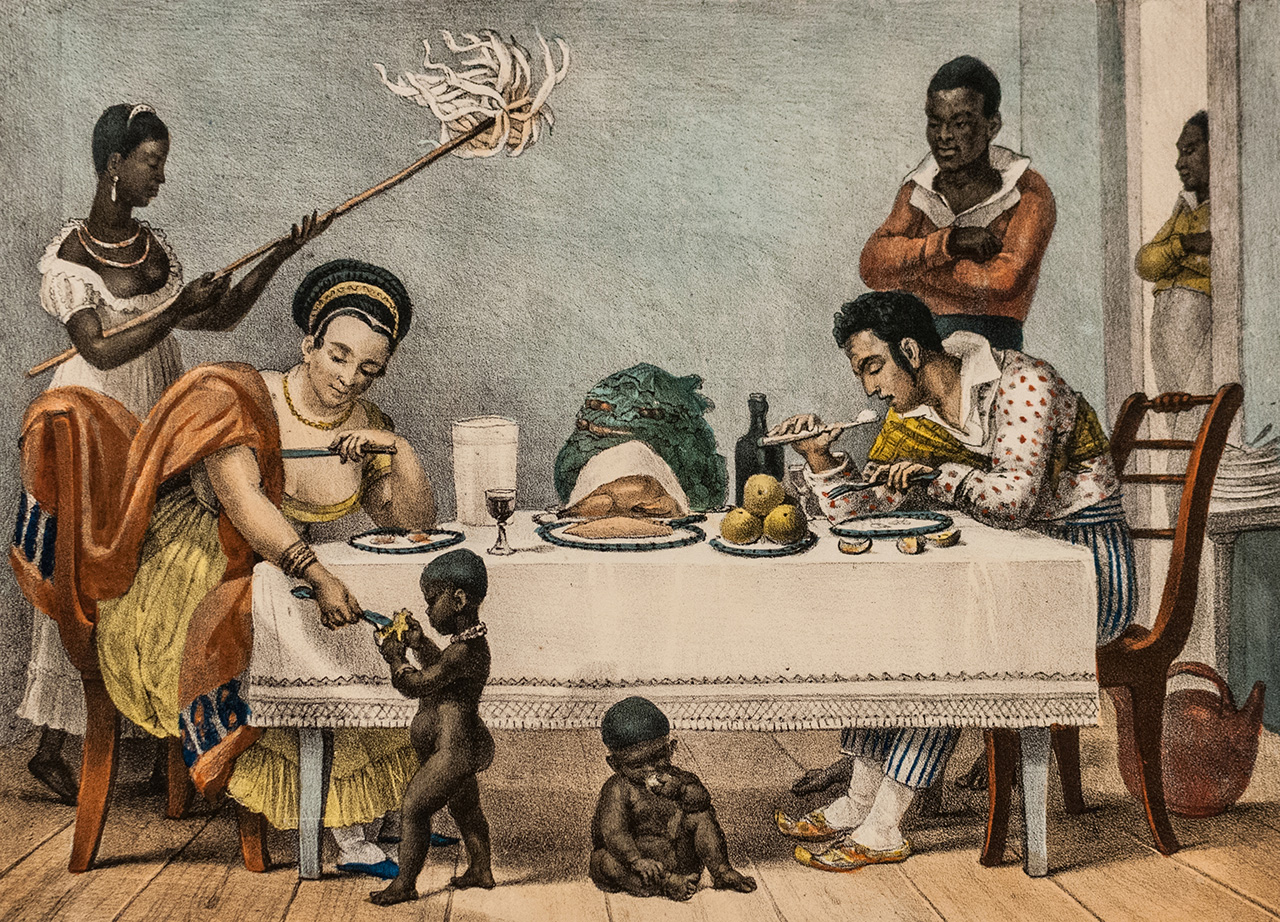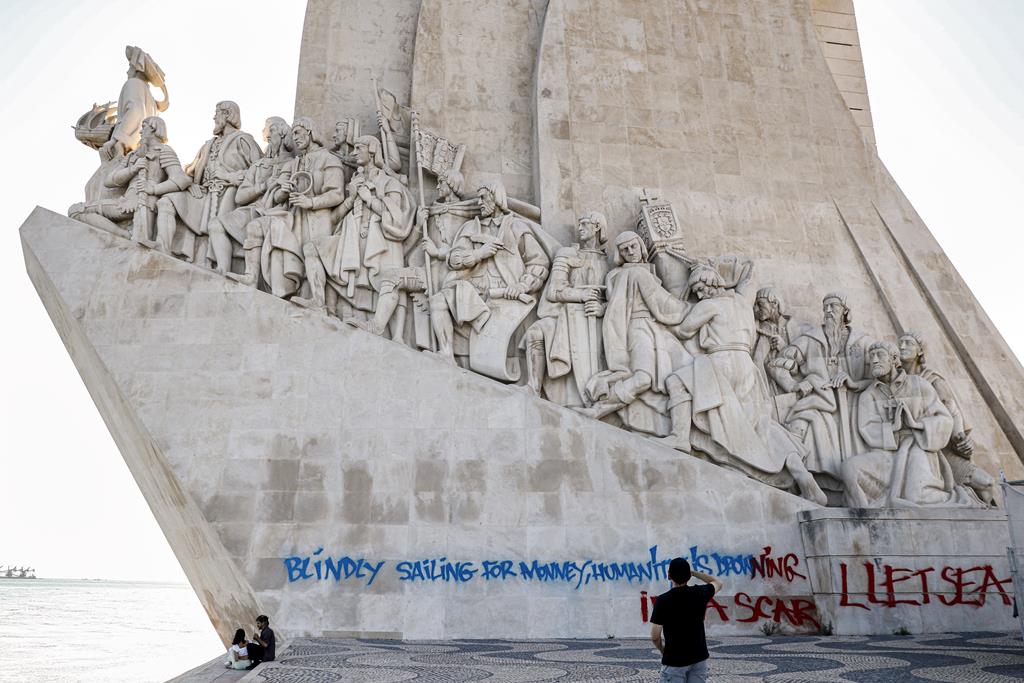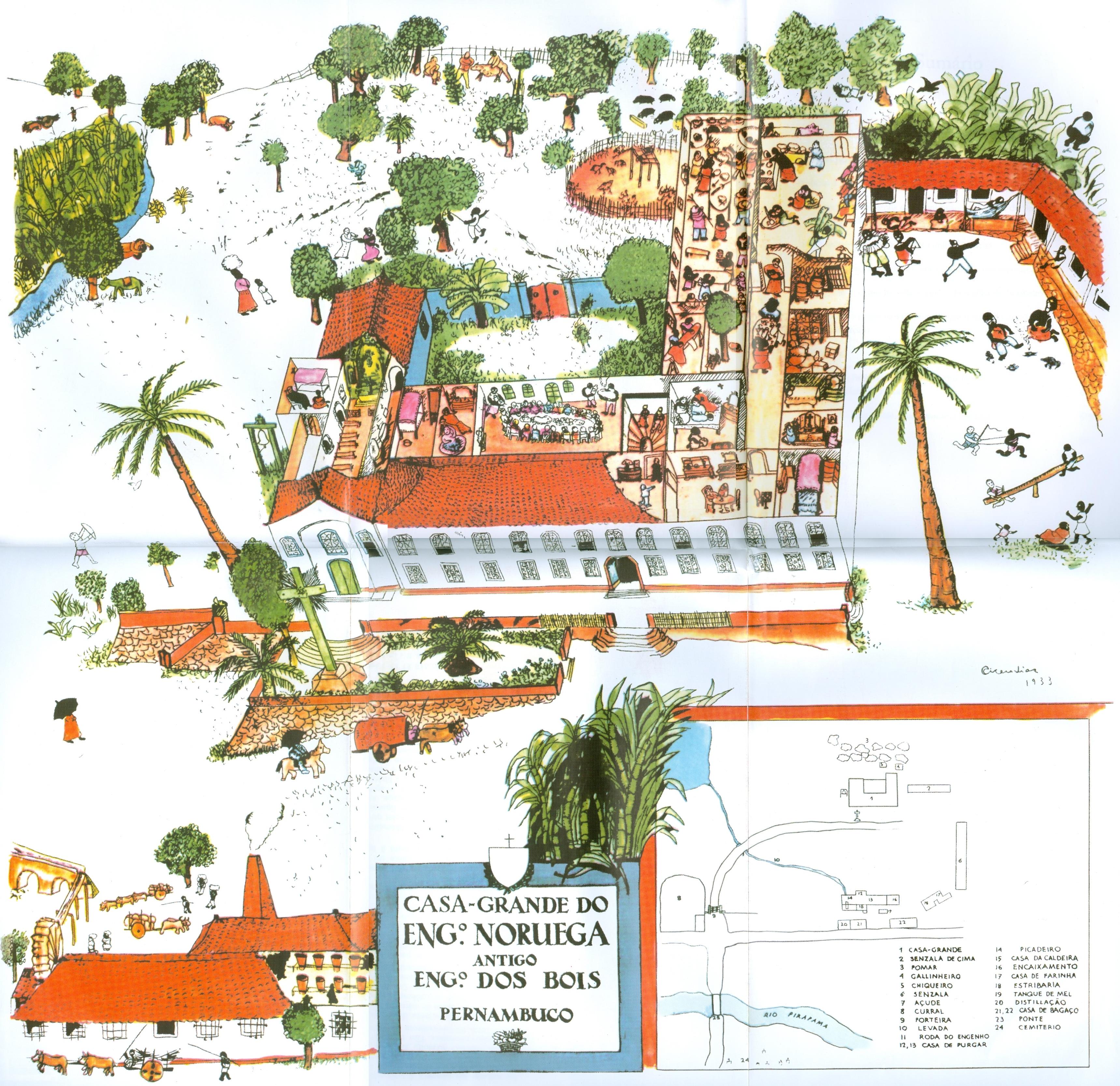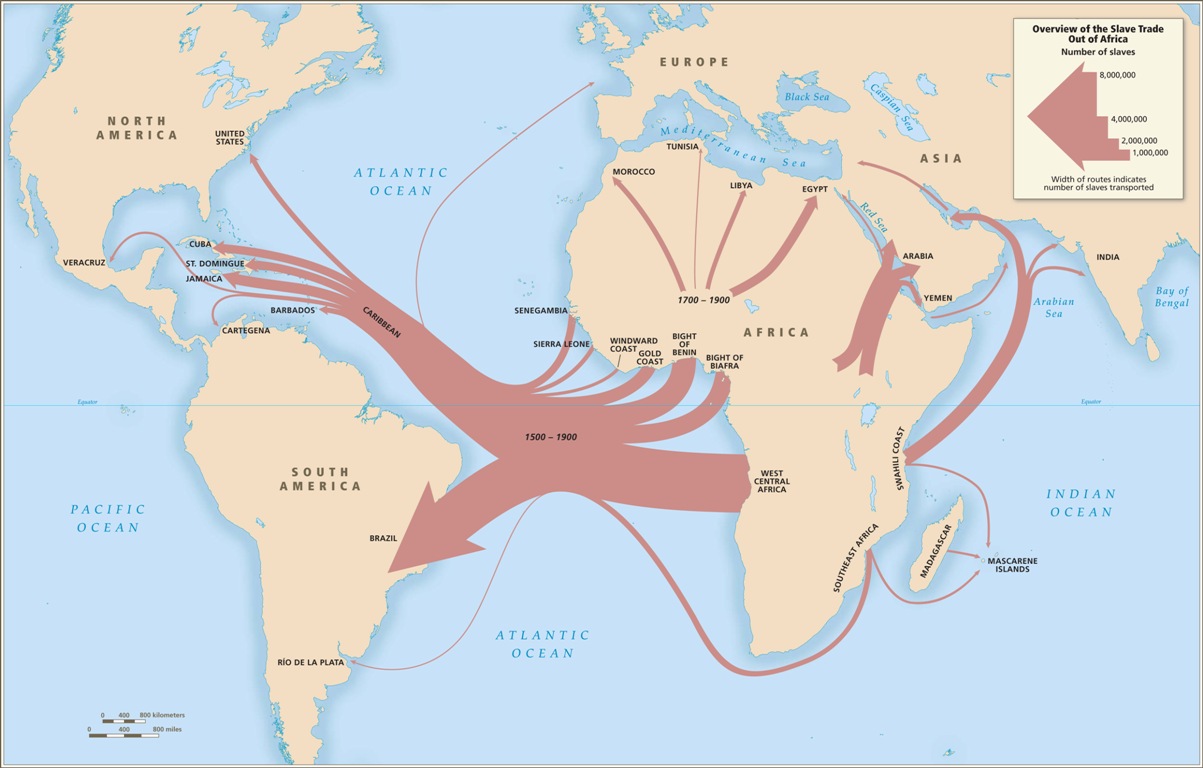Imagem
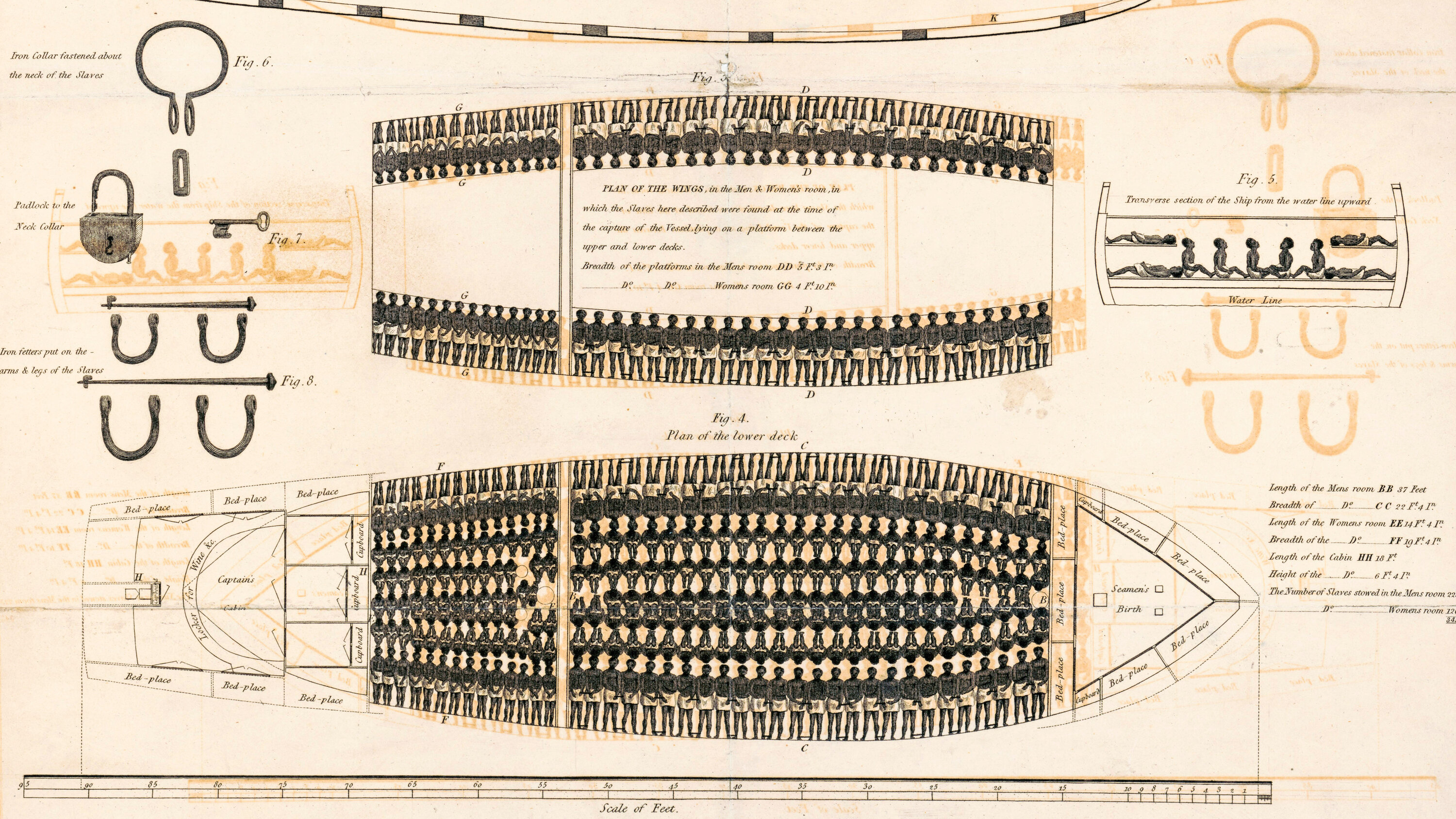
Reflexão
Stowage of the Black Ship Brooks
Published by the Society for Effecting the Abolition of the Slave Trade in response to the publication of the Slave Trade Act of 1788, which for the first time determined the maximum number of enslaved people that could be placed on board a British slave ship. During this period, the ethics of slavery were already being discussed, highlighting not only the act itself, but also the dehumanising conditions to which enslaved people were subjected during the transatlantic voyage.
The slave ships are the forgotten vessel in Portuguese history books, since all the emphasis is on the caravel - symbol of the coloniser's ‘heroic epic’. But for the Portuguese empire to be realised, thousands of people were captured, enslaved and trafficked across the Atlantic for profit.
This voyage could take months and, during this time, the enslaved people were chained together, trapped in the bottom of the ship, with no room to move and no access to decent living conditions. Food and cleanliness were scarce, which made it common for diseases to proliferate.
Revolts on the slave ships were common, although poorly documented (the record of ‘History’ is limited to the power of the coloniser), and the suicide of the enslaved was, more often than not, the only possible form of resistance and escape from the horrors of the voyage on board the slave ship.
Even today, in most Portuguese history books, enslaved people are mentioned as transported ‘merchandise’, continuing a dehumanising and colonial narrative that once again ignores the history of suffering and struggle of enslaved people and their descendants.
It is estimated that 5.8 million people from African territories were enslaved and trafficked, between Portuguese and Brazilian traffickers alone, the latter being responsible for the largest number of victims of the transatlantic trade.
